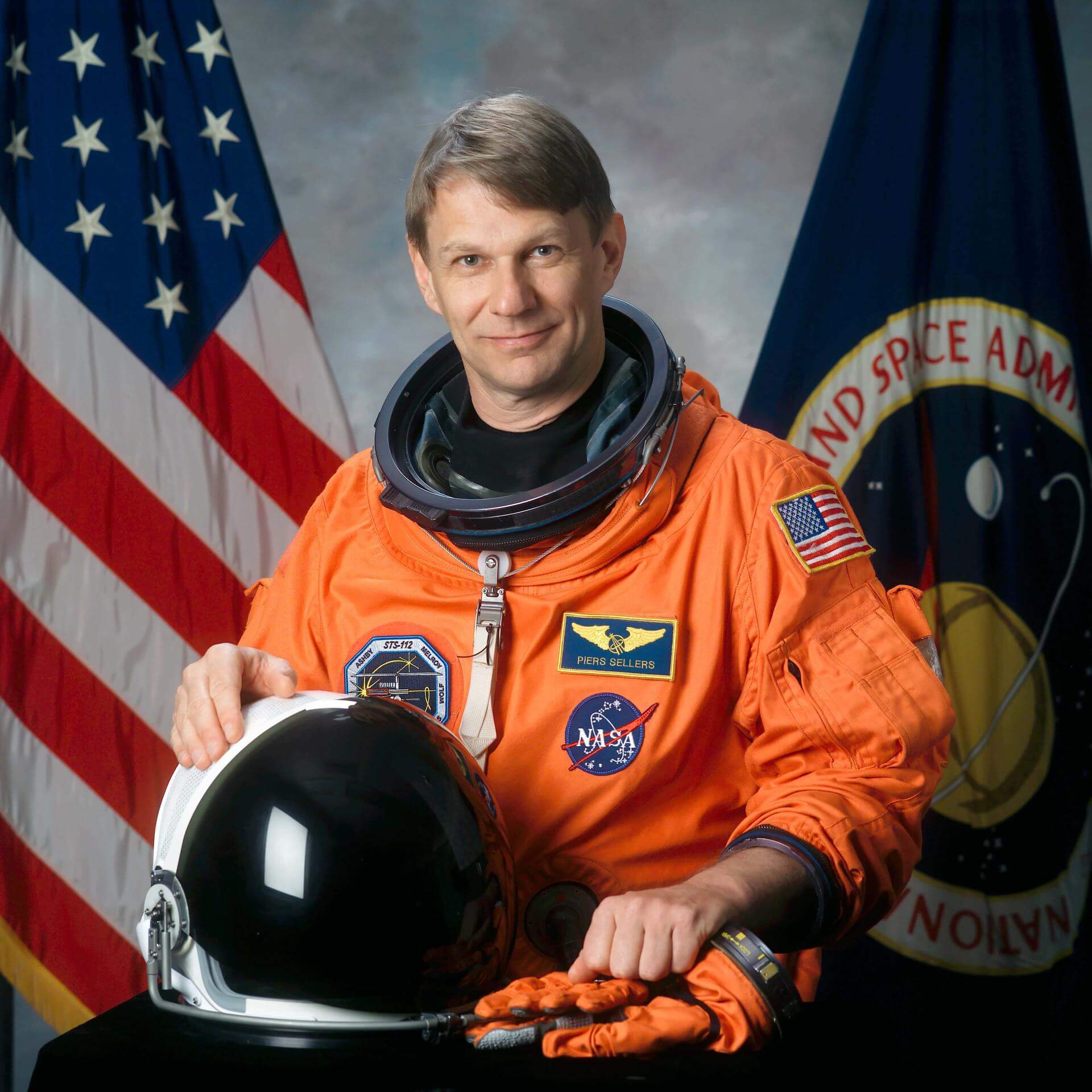Piers Sellers
American - (NASA)
Died While In Active Service
Date of Birth: April 11, 1955
Date of Death: Dec. 23, 2016
Piers John Sellers OBE was a British-American meteorologist, NASA astronaut[1] and Director of the Earth Science Division at NASA/GSFC. He was a veteran of three space shuttle missions. Sellers attended Cranbrook School, Cranbrook, Kent, United Kingdom, until 1973, and achieved a bachelor's degree in ecological science from the University of Edinburgh in 1976. In 1981 he gained a doctorate in biometeorology from the University of Leeds. In 2011, Sellers retired from the NASA Astronaut Corps. Before joining the astronaut corps, Sellers worked at NASA Goddard Space Flight Center on research into how the Earth's biosphere and atmosphere interact. This work involved climate system computer modelling and field work utilising aircraft, satellites and ground support input.
Space Shuttle Atlantis / OV-104 | STS-112
National Aeronautics and Space Administration | United States of AmericaKennedy Space Center, FL, USA
Oct. 7, 2002, 7:45 p.m.
Status: Success
Mission:
STS-112 (ISS assembly flight 9A) was an 11-day space shuttle mission to the International Space Station (ISS) flown by Space Shuttle Atlantis. Space Shuttle Atlantis was launched on 7 October 2002 at 19:45 UTC from the Kennedy Space Center's launch pad 39B to deliver the 28,000 pound Starboard 1 (S1) truss segment to the Space Station. Ending a 4.5-million-mile journey, Atlantis landed at 15:44 UTC on 18 October 2002 on runway 33 at the Kennedy Space Center's Shuttle Landing Facility.
Low Earth OrbitSpace Shuttle Discovery / OV-103 | STS-121
National Aeronautics and Space Administration | United States of AmericaKennedy Space Center, FL, USA
July 4, 2006, 6:37 p.m.
Status: Success
Mission:
STS-121 was a 2006 NASA Space Shuttle mission to the International Space Station (ISS) flown by Space Shuttle Discovery. The main purposes of the mission were to test new safety and repair techniques introduced following the Columbia disaster of February 2003 as well as to deliver supplies, equipment and European Space Agency (ESA) astronaut Thomas Reiter from Germany to the ISS.
Low Earth OrbitSpace Shuttle Atlantis / OV-104 | STS-132
National Aeronautics and Space Administration | United States of AmericaKennedy Space Center, FL, USA
May 14, 2010, 6:20 p.m.
Status: Success
Mission:
STS-132 was the second to last flight of Atlantis and an ISS assembly flight with the primary payload being the Russian Rassvet Mini-Research Module. The flight also carried the Integrated Cargo Carrier-Vertical Light Deployable (ICC-VLD). The mission began on May 14th 2010 at 1820 UTC launching Commander Kenneth Ham, Pilot Domonic A. Antonelli, Mission Specialist 1 Garrett Reisman, Mission Specialist 2 Michael T. Good, Mission Specialist 3 Stephen G. Bowen & Mission Specialist 4 Piers Sellers to orbit. They docked with the ISS 2 days after launch. During the mission 3 spacewalks were conducted to install a spare space to ground Ku band antenna and to conduct general maintenence on the ISS. The mission concluded after 11 days & 18 hours on May 26th 2010 at 1249:18 UTC.
Low Earth OrbitThe National Aeronautics and Space Administration is an independent agency of the executive branch of the United States federal government responsible for the civilian space program, as well as aeronautics and aerospace research. NASA have many launch facilities but most are inactive. The most commonly used pad will be LC-39B at Kennedy Space Center in Florida.
Falcon 9
CSG-3
Space Launch Complex 4E - Vandenberg SFB, CA, USACSG-3 is an Earth observation satellite for the Italian Space Agency, part of a reconnaissance constellation using synthetic aperture radars operatin…
Long March 7A
Shijian 29 A-B
201 - Wenchang Space Launch Site, People's Republic of China2 satellites officially described as for "demonstration of new technologies for spatial targets detection" purposes.
Long March 4B
Tianhui 7
Launch Area 94 (SLS-2 / 603) - Jiuquan Satellite Launch Center, People's Republic of ChinaA satellite officially described as for cartography purposes, details TBD.
Soyuz 2.1b/Fregat-M
AIST-2T 01 & 02
Cosmodrome Site 1S - Vostochny Cosmodrome, Siberia, Russian FederationA pair of Russian optical Earth observation satellites built by the Progress Rocket Space Centre for obtaining stereo images of the Earth's surface, …
Long March 3B/E
Fengyun-4C
Launch Complex 2 (LC-2) - Xichang Satellite Launch Center, People's Republic of ChinaChina's geostationary meteorological satellite program FY-4 (Feng Yun 4) is the second generation of chinese geostationary meteorological satellites.



